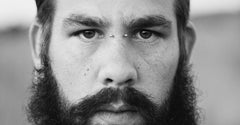The answer to this question is both yes and no. There is no one consensus on how to classify the stages of alopecia, and it largely depends on the particular doctor's understanding and experience. However, there are some general ideas about how alopecia progresses that are widely accepted.
In general, alopecia is classified into three main categories:
- Alopecia Areata - This is the most common type of alopecia, and it characteristically starts with small, round patches of hair loss. The hair loss may eventually spread to larger areas of the scalp, or even the whole head. In some cases, the hair loss may be accompanied by nails that become thin and break easily.
- Androgenetic Alopecia - This form of alopecia is also called male or female pattern baldness, and it is caused by a combination of genetic and hormonal factors. It typically starts with a thinning of the hair on the forehead or temples, and then progresses to a more generalized hair loss over time. In men, this may eventually lead to a complete loss of all the hair on the head; in women, the hair loss is usually less extensive.
- Involutional Alopecia - This is a natural process that happens to everyone as they age. It is characterized by a gradual thinning of the hair over time, as well as a reduction in the overall number of hairs on the head. This type of alopecia is usually not permanent, and the hair will typically grow back once the aging process has slowed down.
While there is no one definitive way to classify the stages of alopecia, these three categories are a good starting point for understanding the condition. If you are concerned about your hair loss, be sure to talk to your doctor about your options and what you can expect going forward.




